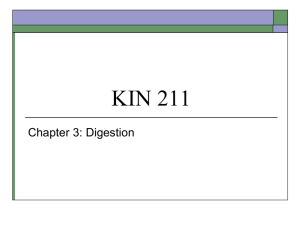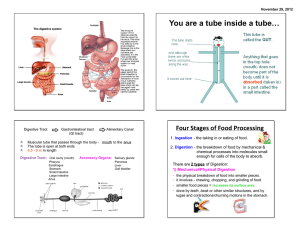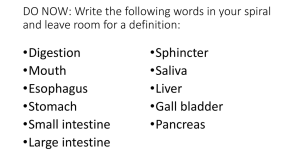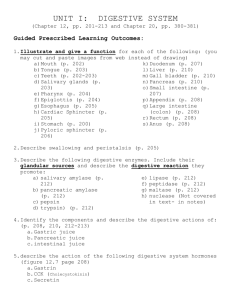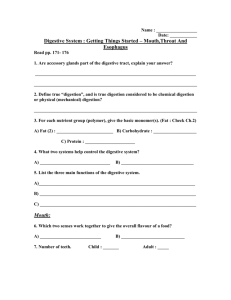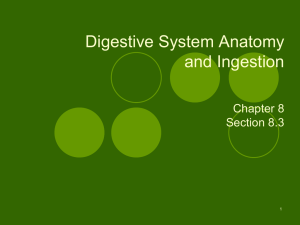Oral Cavity to Stomach
advertisement
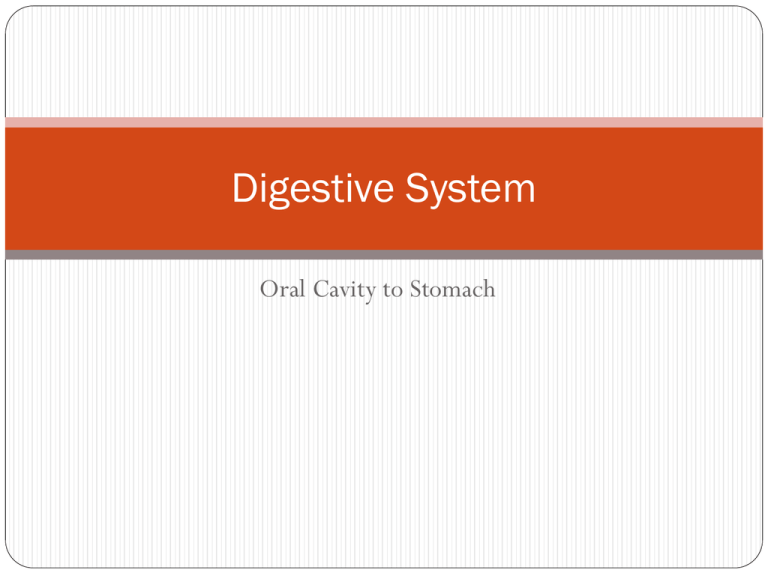
Digestive System Oral Cavity to Stomach Oral Cavity (Mouth) Mechanical (Physical) Digestion: Crushing, Grinding, Shearing, Moistening Mouth – where digestion begins – receives the food Teeth – Mechanically breaks down food 32 Adult teeth Tongue – taste buds initiate nerve impulses; manipulates food to form a mass called a bolus Oral Cavity Salivary Glands – Secrete saliva (containing salivary amalyase) to break down starch There are 3 pairs of salivary glands: Parotid - One below the ears Sublingual – below the tongue Submandibular (under lower jaw) Salivary Glands When you chew food, you moisten and lubricate it with saliva. Saliva contains water, mucus and salivary amylase Starch Maltose (disaccharide) salivary amylase Optimal pH of salivary amylase = 7 Digestion begins in the mouth even before the food is swallowed Once food has been chewed, it is called a bolus Pharynx A common passage way (throat) for both food intake and air movement Between the mouth and esophagus This is where swallowing takes place – it is a reflex action During swallowing, the nasal air passage is usually blocked off by the soft palate and uvula The trachea moves under the epiglottis to cover the opening to the windpipe It is impossible to breathe and swallow at the same time Esophagus Trachea (windpipe) Esophagus Long muscular tube that extends from the pharynx to the stomach Inner surface is lined with a mucus membrane attached by connective tissue to a layer of smooth muscle (circular and longitudinal muscle) Peristalsis moves food down the esophagus Rhythmical contractions of the esophageal muscles If peristalsis occurs when there is no food in your esophagus, you will feel that there is a “lump” in your throat No chemical digestion occurs in the esophagus Cardiac Sphincter At the end of the esophagus, the bolus arrives at the cardiac sphincter which connects to the stomach Sphincters function like valves (made of muscle) Sphincter opens when the muscle is relaxed Sphincter closes when the muscle is contracted Usually prevents food from moving out of the stomach When vomiting occurs, a reverse peristaltic wave causes the sphincter to relax and the contents of the stomach are propelled outward
